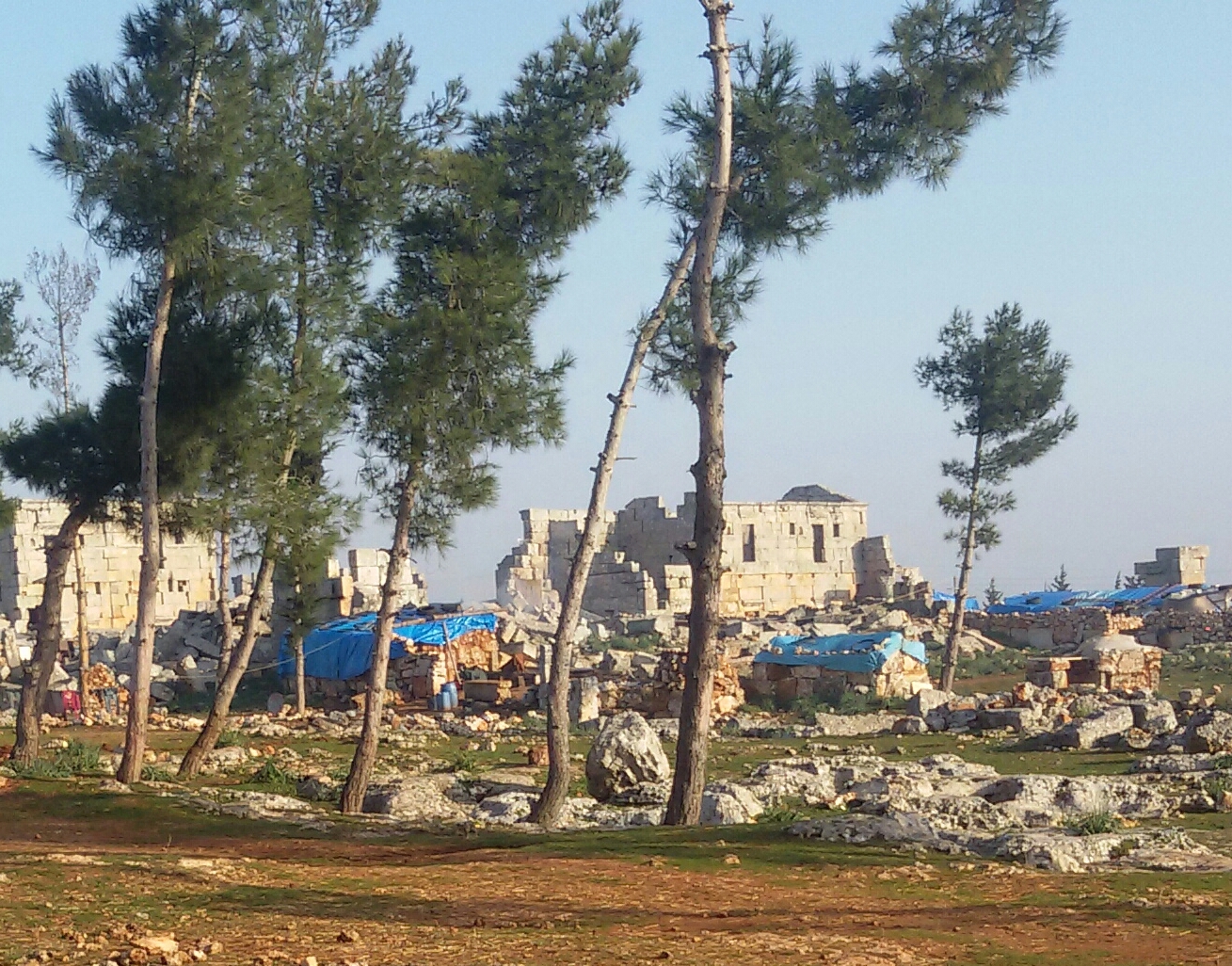Syria’s Displaced Told to Leave Ancient Site

Local council wants to protect archeological treasure in Idlib province from further destruction.
By Ahmad al-Akla
(Hass – Idlib suburbs)

People in north western Syria who were uprooted from their homes and moved to the ancient settlement of Shinshirah have opposed a decision by the local council instructing them to return to their villages.
The council wants to avoid any further damage to the archaeological site, but those sheltering there say it is not yet safe for them to return home.
During the conflict, the countryside of southern Idlib province has been a target of air raids and shelling by government armed forces.
Residents of nearby villages were forced to flee to Shinshirah, also known as Khirbet Hass, where they used the historical monuments as makeshift housing to protect themselves from the bombing and to keep warm through the harsh winter.
Shinshirah, one of a number of Roman- and Byzantine-era settlements known as the “dead cities”, is located in the Zawiya mountain region, west of the city of Marat al-Numan and about five kilometres north of the town of Kfar Nabel. Its stunning vistas and archaeological treasures used to attract tourists from all over the world. Most of the ruins date as far back as Roman times. As such Shinshirah’s own residents fear that it will be completely destroyed by shelling as the regime continues to target those who have fled there.
Before the war, the Syrian authorities invested heavily in the site and planted pine, almond and cypress trees. Now most of the trees have been cut down by incoming residents to burn as fuel because the cost of diesel is so high. Local residents fear the refugees are doing irreparable damage to the site.
“It was a place to stroll and spend our summers,” said Abbas al-Yahya, a 21-year-old college student, reflecting on better times. “Now it’s nothing but rubble.”
When displaced people started arriving in Shinshirah, the local council asked them to commit to going back to their villages when the shelling stopped.
According to Abu Mohammad, the head of the local council in Hass, the time has now come for them to go. He says that since the rebel group Jabhat al-Nusra gained control over army bases at Wadi al-Dayf and al-Hamidiya in late 2014, the security situation has improved, so people can return to the surrounding villages.
Many locals agree that it is time for people displaced from other areas to return home.
Ayham al-Shaykh, 26, owns a local grocery store; he points out that some have already done so successfully.
“We must instruct the displaced people to leave at once,” he said. “Their excuse that the regime army is there is no longer valid. Many have returned to their villages. Their lives are no more valuable than those of their fellow-villagers.”
Some of those who were displaced by the fighting insist that it is still not safe for them to go home.
Electrical engineer Faysal Akla, 52, believes people should be allowed to stay where they are, at least until the end of the winter. He says that if people are forced to leave now, things will be difficult for them since so many of their homes have been destroyed. On top of that, some do not have the money to rent accommodation or buy fuel for heating and cooking.
Abu Ahmad was displaced from Kafruma, a town of approximately 18,000 residents to the west of Marat al-Numan.
He told Damascus Bureau that he fled with his family after intense shelling of his village killed four people in the house next door. He says it is not yet safe enough to go back.
“We know that these old fortifications will be damaged because we are taking shelter in them,” he said. “But the lives of my children are more important than archaeological remains. If we don’t stay here, then our fate is either death in a bombardment or a life in constant danger.”
